(3973 products available)


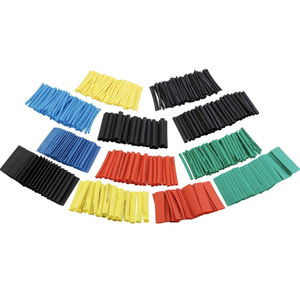
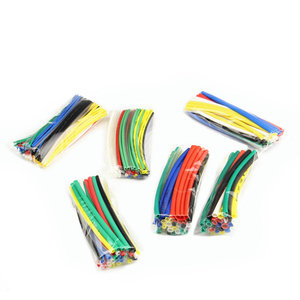














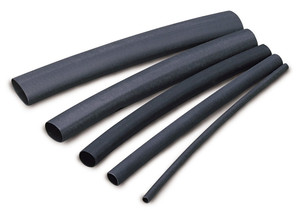
























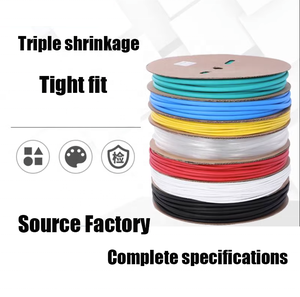


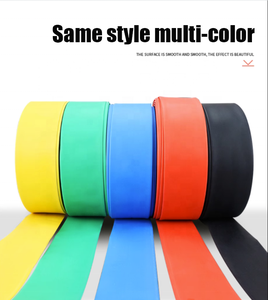




























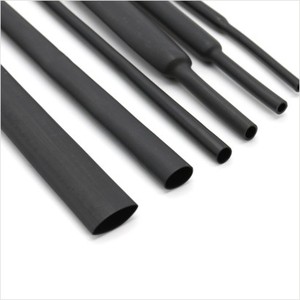




























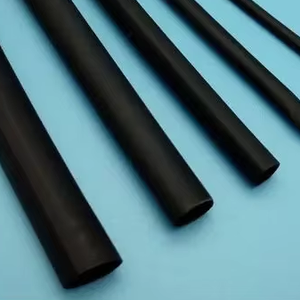











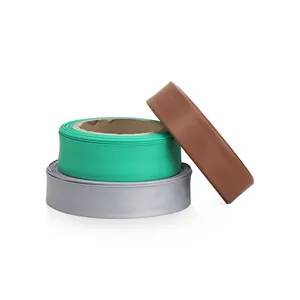
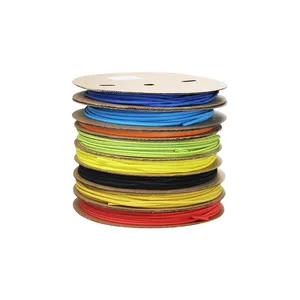









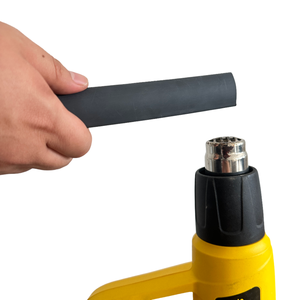





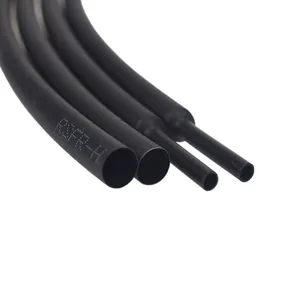
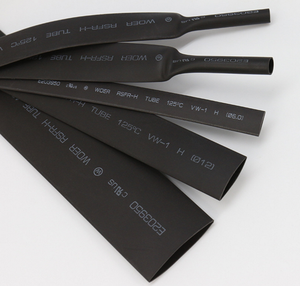



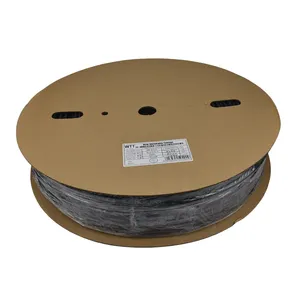




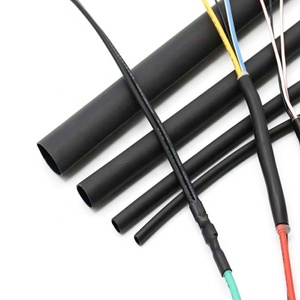























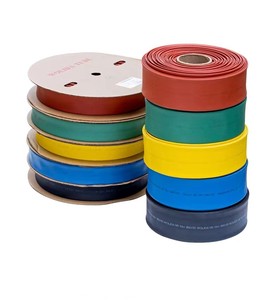




































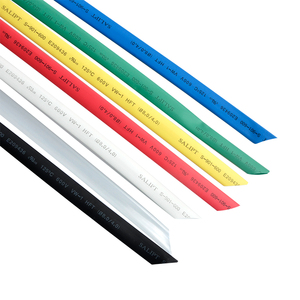













Heat shrink tubing types are used in different electrical operations. This tubing envelops wires, connectors, and other parts in an electric system. They are distinguished mainly by construction materials and characteristics and serve specific functions based on the application.
This has become popular because of its excellent balance between cost and performance. It is chemical- and abrasion-resistant, which protects cable insulation in several settings. It also works well in commercial and industrial applications where heat and mechanical pressure are applied.
This is a versatile, resilient, and high-quality polyolefin copolymer. It has good resistance to environmental stress cracking and clarity. It also allows a high precision heat shrinking process due to its low shrink temperature. These features make it go-to tubing for sensitive electrical components.
This is a cost-effective option that offers worthwhile electrical insulation. Its flexibility allows Shrinking at lower temperatures. Low temperature makes it useful in various applications that need heat shrinkage but cannot afford more expensive materials.
It is designed for high-end applications that tolerate extreme heat, chemicals, or solvents. Manufacturers ensure that these materials are compliant with RoHS. Typically the tubing is used in aerospace or semiconductor manufacturing environments, and durability is paramount.
Heat shrink tubing is highly useful in protecting electrical wires, devices, and components from damage through insulation, encapsulation, and environmental protection. It is an important product in various industrial applications.
RoHS heat shrink tubing is used in protecting wiring harnesses, sensor cables, and battery connections. The tubing protects auto electrical systems from chemicals, moisture, and extreme temperatures. This is crucial for maintaining long-term stability and safety.
Fluoroelastomer heat shrink tubing is particularly valued in this space. The tubing offers protection from extreme heat, harsh chemicals, and pressure, and is used on wires, antennas, and other devices. It helps maintain system integrity while meeting strict RoHS guidelines.
Heat shrink tubing provides the necessary insulation and protection for cables and connectors in Pcs, phones, and other handheld devices. The Cf heat shrink tubing encapsulates sensitive components during production, providing a protective layer that keeps dust and moisture at bay while minimizing exposure to hazardous substances.
Heat shrink tubing protects electrical systems and devices from water, salt, and extreme weather conditions. This tubing is used for wiring and electronics to help ensure long-lasting performance in harsh marine environments. It is critical for preventing corrosion and electrical failure.
The RoHS heat shrink tubing helps protect wires and cables in industrial machinery from cutting, abrasion, and exposure to chemicals. It helps maintain compliance with environmental regulations while ensuring that machinery and equipment operate safely. This minimizes downtime due to electrical issues.
In medical equipment, heat shrink tubing is used to protect wires and sensors and ensure patient safety. It helps meet regulations regarding hazardous substances while ensuring that electrical components remain insulated and functional in a variety of diagnostic and monitoring equipment.
Understanding the specifications and features of heat shrink tubing is essential in assessing its performance and application scope. Several factors come into play when applying RoHS heat shrink tubing.
Material
Heat shrink tubing is mainly made of polyolefin, PVC, EVA, and fluoropolymers. Each material offers different heat resistance, chemical exposure, and flexibility characteristics. Polyolefin material, for example, has good heat stability and is relatively flexible. This factor makes it suitable for various applications.
Shrink ratio
This refers to how much the tubing shrinks when exposed to heat. It typically ranges from 2:1 to 6:1. A tubing option with a shrink ratio of 2:1 is suited for general applications. Higher ratios are flexible enough to accommodate wire gauge size variations and are thus used in industries.
Temperature range
Heat shrink tubing should have a minimum or freezing point of −55°C and a maximum of around 125°C for general applications. Some specialized types can resist up to 200°C for prolonged periods. Such heat shrink tubing can be used in industrial applications.
Dielectric strength
Dielectric strength is a critical factor for electrical insulation purposes. Tubing with high dielectric strength generally prevents electrical breakdown in high-voltage applications. It typically ranges from 20 to 60 kV/mm, depending on the type of heat shrinkable tubing and application. Applications in the aerospace and defense sectors prefer the higher end of the range.
Compliance with RoHS
Heat shrinkable tubing that manufacturers intend for environmental-friendly applications contain no more than 0.1% lead, cadmium, or other hazardous substances. The PVC heat shrink tubing is highly abrasion-resistant, so it is often treated with anti-chemical and anti-abrasion treatments.
Preparation
Using a wire stripper, the first step of installation involves stripping the target section of the wire to expose the bare metal. After stripping, a piece of heat shrink tubing is slid over the wire, ensuring it is large enough to cover the exposed section once shrunk.
Joining wires
If applying the tubing to splice two wires, the exposed sections are twisted together after laying the wires side by side. An electrical connector can be used between joined wires to ensure connection stability during the heat application.
Applying heat
Once the wire is joined, a heat source like a heat gun or hairdryer evenly distributes heat over the tubing. The tubing will start to shrink and form a tight seal around the wire while activating any adhesive lining.
Quality and safety are critical when selecting RoHS heat shrink tubing. Poor-quality or improperly installed tubing can lead to electrical failures, environmental hazards, and even safety risks like fire or electric shock.
Manufacturers should use materials with superior heat resistance, flexibility, and chemical resistance. Poor-quality CV heat shrink tubing made from substandard materials may degrade more quickly and expose wires to environmental factors like moisture or chemicals. Poor-quality materials may have lower mechanical strength, increasing the risk of tubing rupture or electrical shorts during use.
Heat shrink tubing that manufacturers intend for use in environmental-friendly applications should have no more than 0.1% lead, cadmium, or other hazardous substances. Hazardous materials in poor-quality heat shrink tubing pose environmental health risks. Such materials can lead to consumer exposure during product use or disposal.
Some heat shrink tubing has adhesive linings that create a stronger seal. Poor-quality adhesives can lead to bond failure, negating the protective effects of the tubing especially in moisture or chemical-rich environments. They may also result in poor electrical insulation, putting connected components at risk.
Quality heat shrink tubing is easy to install correctly. Low-quality tubing tends to have inconsistent wall thickness or poor heat distribution. This factor complicates proper application and leads to incomplete shrinking or inconsistent adhesion.
Manufacturers' adherence to quality control and certification of heat shrink products for performance and safety standards is critical. One of the quality control measures is performing dielectric strength tests. Others include tensile strength and heat resistance. Strong RoHS tubing certification ensures that the products meet required performance standards. It also helps mitigate safety risks and product recalls.
To select the ideal heat shrink tubing, consider the wire's operating temperature range, diameter, required shrink ratio, and environmental exposure. Go for tubing with superior chemical resistance for chemically harsh environments. Also, ensure the material of construction adheres to your environmental safety standards.
The most common tool for applying heat is a heat gun. A hairdryer, which is a less specialized alternative. Others include soldering irons for small tasks and industrial heat shrink tunnels or ovens in large-scale manufacturing. Ensure the heat is even to prevent uneven shrinking.
Store heat shrink tubing in a cool, dry place, away from direct sunlight for more than a few hours. Light can degrade material quality, so keep them in opaque containers or wrapped in light-blocking material. Ensure a dust-free environment to prevent contamination and ensure clean application during use.
Heat shrink tubing's shelf life depends on its material and environmental storage conditions. Fluoropolymer tubing has a longer shelf life than PVC. Typically temperature, humidity, and UV exposure can degrade the material over time. PVC heat shrink tubing may last 5 to 7 years if stored appropriately.
Recycling heat shrink tubing is challenging due to the mix of materials they may contain. While some types, like polyolefin, can be recycled, the process is often complicated by adhesive linings or other compound materials. Properly dispose of them to protect the environment as they can release toxic substances upon burning.